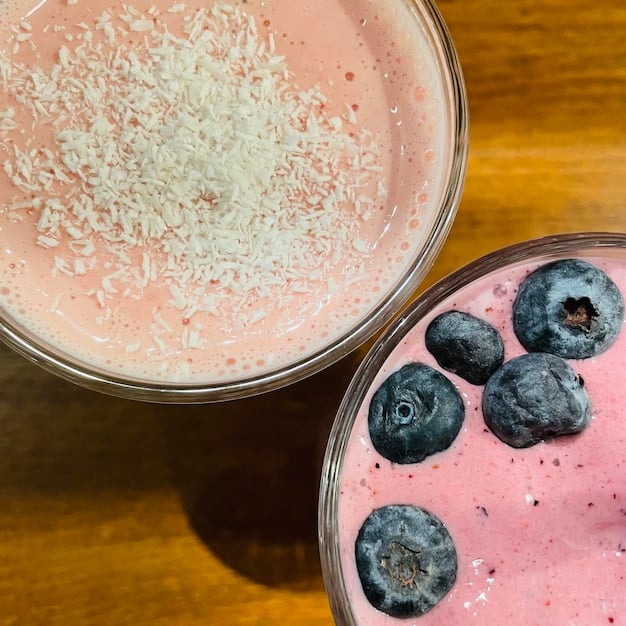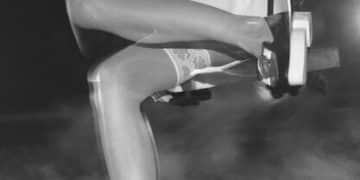The Best Post-Workout Recovery Strategies for Men in 2025

The Best Post-Workout Recovery Strategies for Men in 2025 focus on maximizing muscle repair and minimizing fatigue through nutrition, rest, and targeted therapies like cryotherapy and active recovery. These approaches help athletes and fitness enthusiasts bounce back faster and perform better.
After crushing a workout, your body needs to recover. But what are the best post-workout recovery strategies for men in 2025? It’s not just about protein shakes anymore.
This article dives into the most effective, science-backed methods to help you bounce back faster, reduce muscle soreness, and optimize your performance. Get ready to discover the best post-workout recovery strategies for men in 2025 that will keep you ahead of the game.
Understanding Post-Workout Recovery: Why It Matters
Post-workout recovery is the period after exercise when your body repairs damaged tissues, replenishes energy stores, and adapts to the stress it has endured. Ignoring this phase can lead to prolonged muscle soreness, increased risk of injury, and diminished performance gains. Let’s explore why the best post-workout recovery strategies for men in 2025 are crucial.
The Science of Muscle Recovery
During exercise, muscle fibers experience micro-tears. The recovery process involves repairing these tears, reducing inflammation, and rebuilding muscle tissue stronger than before. Proper nutrition, rest, and targeted therapies can significantly enhance this process. Failing to do so properly will impact future performance.
Key Benefits of Effective Recovery
- Reduced muscle soreness and fatigue
- Improved muscle growth and strength
- Decreased risk of injury
- Enhanced overall athletic performance
Effective recovery isn’t just about feeling better; it’s about optimizing your body’s ability to adapt and improve. Neglecting recovery can hinder progress and increase the likelihood of burnout. That’s why implementing the best post-workout recovery strategies for men in 2025 is essential for sustained gains.
Ultimately, the goal is to allow your body to rebuild and adapt to the stress of your workouts. By prioritizing the right recovery methods, you’re setting the stage for continued progress and long-term athletic success.
Nutrition for Recovery: Fueling Your Muscles
Nutrition plays a pivotal role in post-workout recovery, providing the necessary building blocks for muscle repair and energy replenishment. What you eat after a workout can significantly impact how quickly and effectively your body recovers. So, what are the nutritional components of the best post-workout recovery strategies for men in 2025?

The Importance of Protein
Protein is essential for repairing and rebuilding muscle tissue. Consuming protein after a workout provides the amino acids needed to kickstart the recovery process. Whey protein, casein protein, and plant-based options are all effective choices.
Carbohydrates for Energy Replenishment
Carbohydrates replenish glycogen stores, the primary energy source for muscles during exercise. Opt for complex carbohydrates like whole grains, fruits, and vegetables to provide sustained energy and support recovery. Carbs are crucial for performance, as well as assisting in recovery. They often get overlooked, but that is a mistake.
Hydration: The Overlooked Essential
- Drink plenty of water to replace fluids lost during exercise
- Consider electrolyte-rich beverages to replenish sodium, potassium, and magnesium
- Avoid sugary drinks, which can hinder recovery
Proper hydration is frequently overlooked, but it’s foundational to all recovery processes. Dehydration can exacerbate muscle soreness and fatigue, so staying hydrated is a simple yet powerful recovery strategy. By focusing on hydration, protein, and carbohydrates, you’re providing your body with the resources it needs to recover effectively, making it an integral component of the best post-workout recovery strategies for men in 2025.
In the end, fueling your body with the right nutrients post-workout is a critical step in optimizing recovery, reducing muscle soreness, and enhancing performance. These nutrition-focused strategies have a big impact.
Rest and Sleep: The Cornerstone of Recovery
Rest and sleep are often underestimated in the world of fitness, but they are foundational to recovery. During sleep, your body releases growth hormones that facilitate muscle repair and growth. But what are the key components of rest which are considered the best post-workout recovery strategies for men in 2025?
The Power of Sleep
Aim for 7-9 hours of quality sleep each night to optimize recovery. Create a sleep-friendly environment by keeping your bedroom dark, quiet, and cool. Avoid screens before bed to improve sleep quality.
Active Recovery vs. Passive Rest
Active recovery involves low-intensity activities like walking or stretching, which promote blood flow and reduce muscle stiffness. Passive rest, on the other hand, involves complete rest, allowing your body to fully recover. Both types of rest have their place in your recovery routine.
Active recovery is not only about physical rest; it’s also about mental relaxation. Reducing stress levels is essential for promoting recovery and overall well-being. Implementing stress-reduction techniques like meditation, deep breathing exercises, or spending time in nature can significantly enhance your recovery process.
Prioritizing sleep, active recovery, and stress management are fundamental steps in the best post-workout recovery strategies for men in 2025, allowing your body to rebuild and adapt effectively.
In summary, rest and sleep are indispensable components of post-workout recovery, providing the time and conditions necessary for your body to repair, rebuild, and adapt. Prioritizing rest is key.
Targeted Therapies: Enhancing Recovery Through Technology
Advancements in technology have led to the development of various targeted therapies aimed at enhancing post-workout recovery. These therapies can help reduce inflammation, alleviate muscle soreness, and accelerate the recovery process. Let’s investigate the best post-workout recovery strategies for men in 2025 which relate to new technologies.
Cryotherapy: The Cold Truth
Cryotherapy involves exposing your body to extremely cold temperatures for a short period, typically in a cryo-chamber. This therapy can reduce inflammation, alleviate pain, and promote faster recovery. It’s becoming increasingly popular among athletes and fitness enthusiasts.
Foam Rolling and Massage Guns: Self-Myofascial Release
Foam rolling and massage guns are tools used for self-myofascial release, a technique that helps break up muscle adhesions and improve blood flow. These tools can reduce muscle soreness and improve flexibility. Using rollers or guns post-workout is an excellent strategy.
Compression Therapy: Enhancing Circulation
- Compression garments improve blood flow and reduce muscle swelling
- Pneumatic compression devices apply sequential pressure to enhance circulation
- Both methods promote faster recovery
Compression therapy assists in removing metabolic waste products from muscles and delivering oxygen and nutrients to promote repair. As technology evolves, more sophisticated recovery tools are becoming available, offering targeted solutions for muscle recovery. From cryotherapy to foam rolling and compression therapy, these technological advancements are reshaping the best post-workout recovery strategies for men in 2025.
Ultimately, targeted therapies offer powerful tools for enhancing post-workout recovery, reducing inflammation, and accelerating muscle repair in various ways. Incorporating these therapies into your routine can give you a competitive edge.

Planning For Progressive Overload With Long-Term Recovery
Planning progressive overload into your training routine allows you to continue challenging your body and making gains over time. However, it’s crucial to balance progressive overload with adequate recovery to prevent overtraining and injury. So, what is the importance of long term recovery, relating to the best post-workout recovery strategies for men in 2025?
Implementing Deload Weeks
Deload weeks involve reducing the intensity or volume of your training to allow your body to recover and adapt. These weeks can help prevent overtraining and promote long-term progress. Planning strategically is a must.
Listening to Your Body
Pay attention to signs of overtraining, such as persistent muscle soreness, fatigue, and decreased performance. Adjust your training and recovery strategies as needed to avoid burnout and injury. If something hurts, don’t do it!
The Role of Mental Wellbeing
- Manage stress through meditation, yoga, or spending time in nature
- Ensure adequate sleep to support physical and mental recovery
- Maintain a positive mindset to stay motivated and consistent
Managing stress is crucial for long-term athletic success. Mental well-being plays a vital role in workout recovery. Prioritizing mental well-being is essential for optimizing recovery and preventing burnout.
Incorporating deload weeks, listening to your body, and prioritizing mental well-being are key components of a sustainable fitness journey.
By focusing on both physical and mental recovery, you’re setting yourself up for long-term success and making the best post-workout recovery strategies for men in 2025 a lifestyle.
In short, balancing progressive overload with adequate recovery is crucial for long-term fitness success. Prioritizing recovery is key to prevent injury.
| Key Point | Brief Description |
|---|---|
| 💪 Nutrition | Protein and carbs replenish muscle energy. |
| 😴 Rest & Sleep | Crucial for muscle repair and growth hormone release. |
| 🧊 Cryotherapy | Reduces inflammation and soreness with cold exposure. |
| 🧘 Mental Health | Stress management is essential. |
Frequently Asked Questions
Consuming protein and carbohydrates within an hour after your workout helps repair muscle tissue and replenish energy stores. Whey protein is a very popular and effective choice.
Sleep is extremely important. During sleep, your body releases growth hormones that facilitate muscle repair and growth. Aim for 7-9 hours of quality sleep each night to maximize recovery.
Yes, active recovery can help reduce muscle soreness by promoting blood flow and reducing stiffness. Low-intensity activities like walking or stretching are great options.
Staying hydrated is essential for replacing fluids lost during exercise and supporting various recovery processes. Drink plenty of water and consider electrolyte-rich beverages to replenish essential minerals.
Yes, targeted therapies include cryotherapy and foam rolling. These can reduce inflammation, alleviate muscle soreness, and promote faster recovery after intense workouts.
Conclusion
Implementing the best post-workout recovery strategies for men in 2025 involves a combination of nutrition, rest, targeted therapies, and mental well-being. By prioritizing recovery and incorporating these strategies into your routine, you can optimize your performance, reduce muscle soreness, and achieve long-term fitness success.
Remember to listen to your body, adjust your strategies as needed, and stay consistent with your recovery efforts. By adopting a comprehensive approach to recovery, you’ll be able to maximize the benefits of exercise and enjoy a healthier, more active lifestyle.





